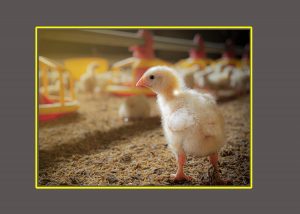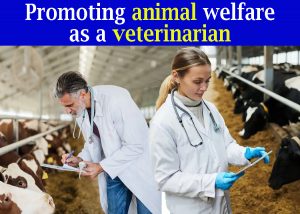
Livestock production, a subsector of agriculture, plays an especially important role in accounting for over 58 per cent of the country’s agriculture sector. Pakistan’s primary natural resources of arable land and water have enabled agriculture to become the mainstay of its economy.
Supporting nearly 10 million families who earn more than 40 per cent of their income from livestock production activities, the livestock sector contributes to over 11 per cent of Pakistan’s Gross Domestic Product (GDP).
But despite the scale and scope of livestock production within the country, Pakistan represents less than one per cent of the international livestock export market. This is mainly due to a lack of commercial backgrounding and feedlot fattening farms, a limited number of abattoirs equipped with proper machinery and equipment, improper control of foot and mouth disease (FMD), and the absence of breeds capable of providing a higher feed conversion ratio (FCR).
Additionally, livestock producers in Pakistan face constraints in accessing top import markets such as China, Japan, Malaysia, Hong Kong, and Europe, primarily because of their inability to provide a diversified range of livestock products at competitive prices while complying with international food safety and traceability standards.
To address this issue, the USAID-funded U.S. Pakistan Partnership for Agricultural Market Development (AMD) project, implemented by Cultivating New Frontiers in Agriculture (CNFA), introduced digital technologies such as feed ration balancing, herd management, and traceability software to commercial feedlots and export abattoirs to support the development of Pakistan’s industrial agriculture and livestock sectors.
Ration Balancing and Farm Management Software
Livestock feed is the highest cost for Pakistan’s livestock farmers because meeting the international requirements for livestock nutrition is complex and requires proper technologies to balance feed formulation rations with maximum accuracy. Utilizing a specialized feed software called “FRB,” a “feed ration balancing” product created by a global agribusiness, AMD was able to improve feed management processes and help modernize integrated feedlot operations for ten Pakistani commercial feedlots.
The “FRB” software collects nutritional information from its databases as well as a locally developed feedstuff library by analyzing more than 40 different feed ingredients collected from 40 districts in Sindh and Punjab provinces.
It also uses Radio-Frequency Identification (RFID) and E-Tag tools synced with an electronic scale to measure and record live animals’ body weight. The system then tracks the data collected from each tagged animal – weight, health, and feed bunk records – to calculate the animal’s feed conversion ratio (FCR), ideal medicine intake, and movement.
Together, this technology helps commercial feedlots prepare balanced and nutritious feed at the lowest cost by comparing feed market prices with dietary needs to provide a variety of feed ration options, allowing farmers to make informed decisions about which feed ingredient combinations yield maximum returns for their feedlot farms in competitive markets.
ZulMeat™ Traceability Software
Another major export obstacle in Pakistan is the traceability of agricultural produce and livestock. ZulMeat™, a locally developed and trade-marked software system, ensures product traceability at meat processing abattoirs by allocating a unique identity code to each animal that enters the abattoir facility. With the ability to capture the transfer of animal carcasses through various stages of production, processing, and distribution, ZulMeat™ generates accurate information about the origin and movement of an animal. This tracking method also helps to monitor and prevent the spread of animal diseases and enhance overall biosecurity.
From facility to plate, ZulMeat™ ensures the proper traceability of products across the meat processing cycle, paves the way for food safety certifications such as ISO 22000, and improves the credibility of meats marketed through its users’ abattoirs.
So far, these 10 AMD-supported feedlots have improved their organizational capacity to manage more than 4,000 market-ready cattle efficiently. Additionally, the three abattoirs supported with ZulMeat™ were able to export more than 18,000 metric tons of traceable meat to different Gulf Cooperating Council countries.
Throughout the four-year project, AMD tailored digital technology training and grants to livestock farmers, commercial feedlots and export abattoirs to help them modernize their operations to meet international standards, make informed management decisions, better respond to market needs, increase competitiveness, and strengthen Pakistan’s meat export capability in new and existing markets.
Top five digital agricultural apps in Pakistan
Pakistan is an agrarian economy where farming and agriculture make up almost 19% of the GDP. Furthermore, 40% of the labour force in the country works in the agriculture sector. Emerging technology has been disrupting the traditional farming sector to ensure that there are more productivity and efficiency. The top 5 apps which are playing their part in transforming the agricultural industry of Pakistan for the farmer include:
1) Bakhtiar Kissan:
Jazz Bakhabar Kissan is a dedicated app that helps farmers to increase their crop yield with updated information and technology. The information provided by this app covers everything from soil preparation to post-harvest, along with livestock and weather updates with audio, video, and pictorial presentations. This app indicates how private organizations such as Jazz can contribute to revolutionizing the concept of agriculture in Pakistan.
2) Ricult Pakistan:
Ricult Pakistan is another digital app that is working to increase the productivity & profitability of small farmers in the country by providing them agricultural information, solutions for their problems, and access to credit and the marketplace. Through the easy application process, farmers can get access not only to free agricultural information but also to market for purchases and credit at flexible terms.
3) Kisan Zar Zameen:
Kisan Zar Zameen is a health analysis app that provides multiple services to farmers, including the use of multi-spectral imagery from satellites. Soil conditions, crop health analysis, and weather updates are all provided through this app, making it a one-stop digital solution for farmers. Using this app, the user can detect crop stress at an early stage, benchmark crop performance, and monitor crop growth. They can also request drone spraying and mapping service, which digitalizes the agriculture sector and helps the farmer to increase yield.
4) Kissan Bazaar:
Kissan Bazaar is an online market place where a farmer can buy and sell agriculture items. The app includes separate sections for fruit, vegetable, poultry, and livestock. It provides an e-commerce facility to the farmer, making it easy for the rural farmer to get access to the market directly through his smartphone.
5) Agri Smart:
The Punjab Public Management Reform Program (PPMRP) launched an ‘Agri Smart’ app for extension workers with a wide range of services including farmer training sessions, pest warnings, monitoring agricultural inputs, soil sampling, and receiving complaints. This app will digitalize the work of extension workers, which means more easily accessible and fast service for the farmers in Punjab.
Veterinary Telemedicine
Telemedicine is the use of telecommunication and information technology to provide clinical health care from a distance. It helps eliminate distance barriers and can improve access to medical services that would often not be consistently available in distant rural communities. It is also used to save lives in critical care and emergencies. University of veterinary and animal sciences Lahore Pakistan started its telemedicine services during COVID 19 case to relieve the pet animals and livestock farmers. That is one of the significant prototype shift from traditional treatment to digitalization.
Animal nexuses
This is another app that leads to digital livestock. This app provides different facilities to livestock farmers, veterinary doctors, and animal lovers in the form of various services, including getting an appointment from the veterinary doctor and buy an animal or bird of your interest by downloading this app. Moreover, veterinary doctors, livestock farmers can be registered on this app, and people can access them and take their services and animals/birds of their interest.
Going digital for Eid: E-services make buying sacrificial animals easy
Considered tedious for adults but the singular most significant experience amongst kids could soon be lost to technology with a host of digital services, whether on dedicated websites, social media groups or even mobile applications sites are now offering sacrificial cows and goats at the touch of a button, complete with home delivery and post-delivery payment.
Online cattle markets seem to be taking over social media networking sites ahead of Eidul Azha.
Conclusion
In the bottom line, Digitalization in livestock and agriculture is the need of the hour in Pakistan, as the world has already taken a step forward towards digitalization. In this respect, there should be frequent workshops to educate livestock /agriculture farmers on how to use this digital technology for fruitful results. We can hope that this digitalization will bring new horizons for the livestock industry in Pakistan shortly.
-By Dr Muhammad Zahid Farooq, Dr Jalees Ahmad and Dr Zafar Hayat, College of Veterinary and Animal Sciences, Jhang







